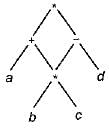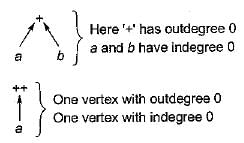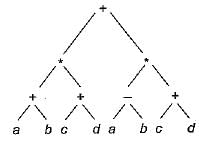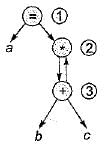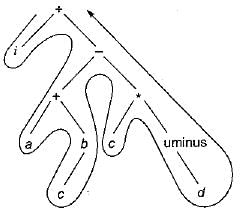Test: Code Generation & Optimization- 2 - Computer Science Engineering (CSE) MCQ
15 Questions MCQ Test GATE Computer Science Engineering(CSE) 2025 Mock Test Series - Test: Code Generation & Optimization- 2
In some phase of compiler
Input
temp1 := Inttoreal (60)
temp2 := id3 * temp1
temp3 := id2 + temp2
id1 := temp3
Output
temp 1 := id3 * 60.0
id1 := id2 + temp1
where temp 1 , temp 2 , temp 3 are temporary storage, id1, id2, Id3 are identifier into real is converting int 60 to real number. The above phase is
temp1 := Inttoreal (60)
temp2 := id3 * temp1
temp3 := id2 + temp2
id1 := temp3
Output
temp 1 := id3 * 60.0
id1 := id2 + temp1
Consider the DAG with V = {1, 2, 3, 4, 5, 6}, shown below
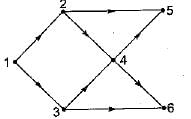
Which of the following is NOT a topological ordering
A directed acyclic graph represents one form of intermediate representation. The number of non terminals nodes in DAG of a = (b + c)*(b + c) expression is
A pictorial representation of the value computed by each statement in the basic block is
DAG representation of a basic block allows
The intermediate code generated for the following syntax tree is:
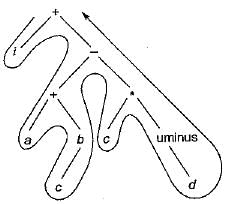
The triple representation for following representation is:

Generation of intermediate code based on an abstract machine model is useful in compilers because
Three address code’ technique for intermediate code generation shows that each statement usually contains three addresses. Three addresses are as follows:
Consider the following arithmetic infix expression Q.
A + (B * C - (D / E ^ F) * G) * H
Transform 'Q' into its equivalent postfix expression.
Which of the following is not a type of three address statements?
Consider the following statements:
S1: Three address code is a linearized representation of a syntax tree.
S2: The syntax tree not depicts the natural hierarchical structure of source program
Which of the above statements is/are true
|
55 docs|215 tests
|
|
55 docs|215 tests
|


